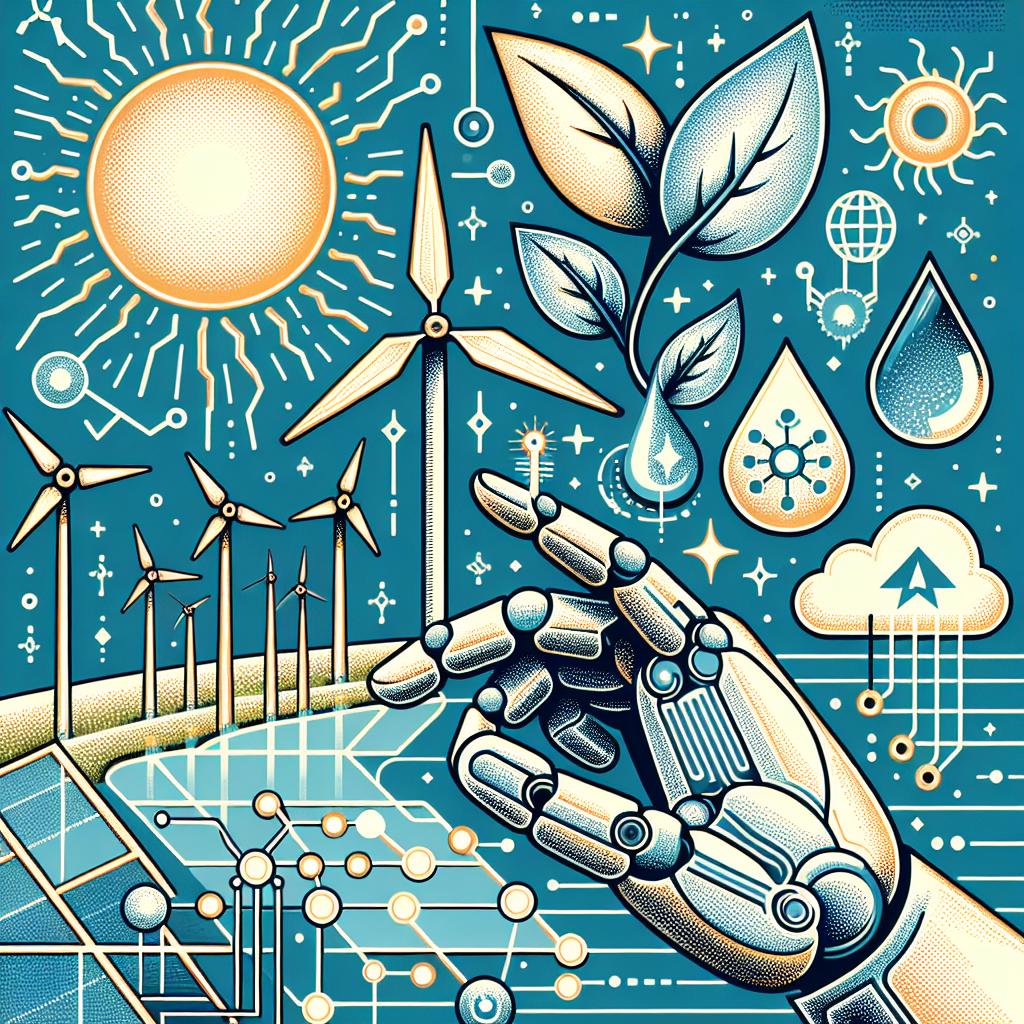In recent years, the renewable energy sector has seen tremendous growth, with countries around the world increasingly investing in clean and sustainable sources of energy. However, one of the biggest challenges facing the renewable energy industry is the variability of renewable energy sources such as wind and solar power. To address this challenge, researchers and industry experts have been exploring the use of artificial intelligence (AI) tools for renewable energy forecasting and analysis.
AI tools are revolutionizing the way we predict renewable energy generation, optimize energy production, and manage the grid. By harnessing the power of AI algorithms, renewable energy stakeholders can make informed decisions that lead to increased efficiency, reduced costs, and improved grid stability. In this article, we will explore the various AI tools being used in the renewable energy sector, their benefits, and how they are shaping the future of renewable energy.
AI Tools for Renewable Energy Forecasting
One of the key applications of AI in the renewable energy sector is forecasting. Accurate forecasting of renewable energy generation is essential for efficient grid management, energy trading, and resource planning. Traditional forecasting methods rely on historical data and meteorological models, but these methods often fall short in capturing the complex and dynamic nature of renewable energy sources.
AI tools, on the other hand, can analyze vast amounts of data in real-time, identify patterns, and make accurate predictions. Machine learning algorithms, such as neural networks and support vector machines, can be trained on historical data to predict future energy generation with high accuracy. These AI-powered forecasting models can take into account a wide range of factors, including weather conditions, time of day, and seasonality, to provide reliable energy forecasts.
AI Tools for Renewable Energy Analysis
In addition to forecasting, AI tools are also being used for analysis and optimization in the renewable energy sector. AI algorithms can analyze data from sensors, meters, and other sources to identify inefficiencies, optimize energy production, and improve grid stability. For example, AI-powered optimization algorithms can determine the best operating parameters for renewable energy assets, such as wind turbines and solar panels, to maximize energy output and minimize downtime.
Furthermore, AI tools can be used to detect anomalies and predict equipment failures before they occur. By analyzing data from sensors and monitoring systems, AI algorithms can identify patterns indicative of potential issues and alert operators to take preventive action. This proactive approach to maintenance can help reduce downtime, extend the lifespan of renewable energy assets, and improve overall system reliability.
Benefits of AI Tools for Renewable Energy
The use of AI tools in the renewable energy sector offers a wide range of benefits, including:
1. Improved Forecasting Accuracy: AI-powered forecasting models can provide more accurate predictions of renewable energy generation, enabling operators to better plan and optimize their energy production.
2. Increased Efficiency: AI algorithms can optimize energy production and grid management, leading to increased efficiency and reduced operating costs.
3. Enhanced Grid Stability: By predicting energy generation and consumption more accurately, AI tools can help improve grid stability and reduce the risk of blackouts and outages.
4. Proactive Maintenance: AI-powered analysis can detect equipment failures before they occur, allowing operators to take preventive action and avoid costly downtime.
5. Scalability: AI tools can be easily scaled to accommodate large volumes of data and provide real-time insights, making them ideal for the dynamic and complex renewable energy sector.
FAQs
Q: How accurate are AI-powered forecasting models for renewable energy generation?
A: AI-powered forecasting models are highly accurate, often outperforming traditional forecasting methods. By analyzing vast amounts of data in real-time, AI algorithms can capture the complex and dynamic nature of renewable energy sources and provide reliable predictions.
Q: How can AI tools help optimize energy production in the renewable energy sector?
A: AI algorithms can analyze data from sensors, meters, and other sources to identify inefficiencies and optimize energy production. By determining the best operating parameters for renewable energy assets, AI tools can maximize energy output, reduce downtime, and improve overall system efficiency.
Q: What are the key benefits of using AI tools for renewable energy analysis?
A: The key benefits of using AI tools for renewable energy analysis include improved grid stability, increased efficiency, proactive maintenance, and scalability. AI algorithms can help operators better manage their energy assets, reduce costs, and enhance overall system reliability.
Q: How can renewable energy stakeholders incorporate AI tools into their operations?
A: Renewable energy stakeholders can incorporate AI tools into their operations by partnering with AI technology providers, implementing AI-powered software solutions, and training their staff on AI applications. By leveraging the power of AI, renewable energy stakeholders can unlock new opportunities for growth and innovation in the sector.
In conclusion, AI tools are transforming the renewable energy sector by providing accurate forecasting, optimizing energy production, and improving grid stability. By harnessing the power of AI algorithms, renewable energy stakeholders can make informed decisions that lead to increased efficiency, reduced costs, and improved system reliability. As the demand for clean and sustainable energy continues to grow, AI tools will play an increasingly important role in shaping the future of renewable energy.

